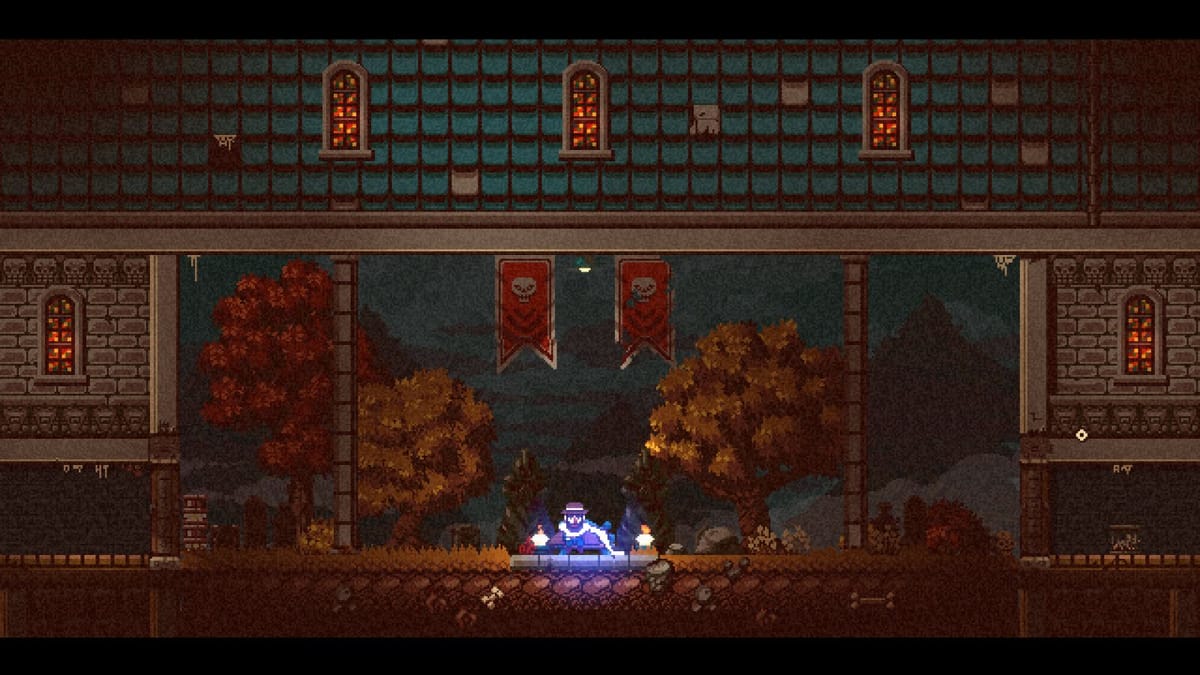
Back in July, I had the honor of previewing Doinksoft’s narrative-driven action platformer Gunbrella, and I’ve been itching to play more ever since. The worldbuilding and characters had me hooked, and the gunbrella itself was fun to maneuver around and shoot with. It had a certain charm that I just couldn’t get enough of, as its comical characters and sobering brutality dovetail into a realistic and gritty world.
The story is simple, you’re a woodsman on a mission. Something was taken from you, and you need to get it back by any means necessary. Of course, the setting is unveiled during your search, and you get a glimpse into this dark world. Pollution, corruption, and kidnappings are commonplace, and most people are just trying to get by. You’re not here to save the world, but if you’re so inclined, you can do a little good for the people at the bottom.
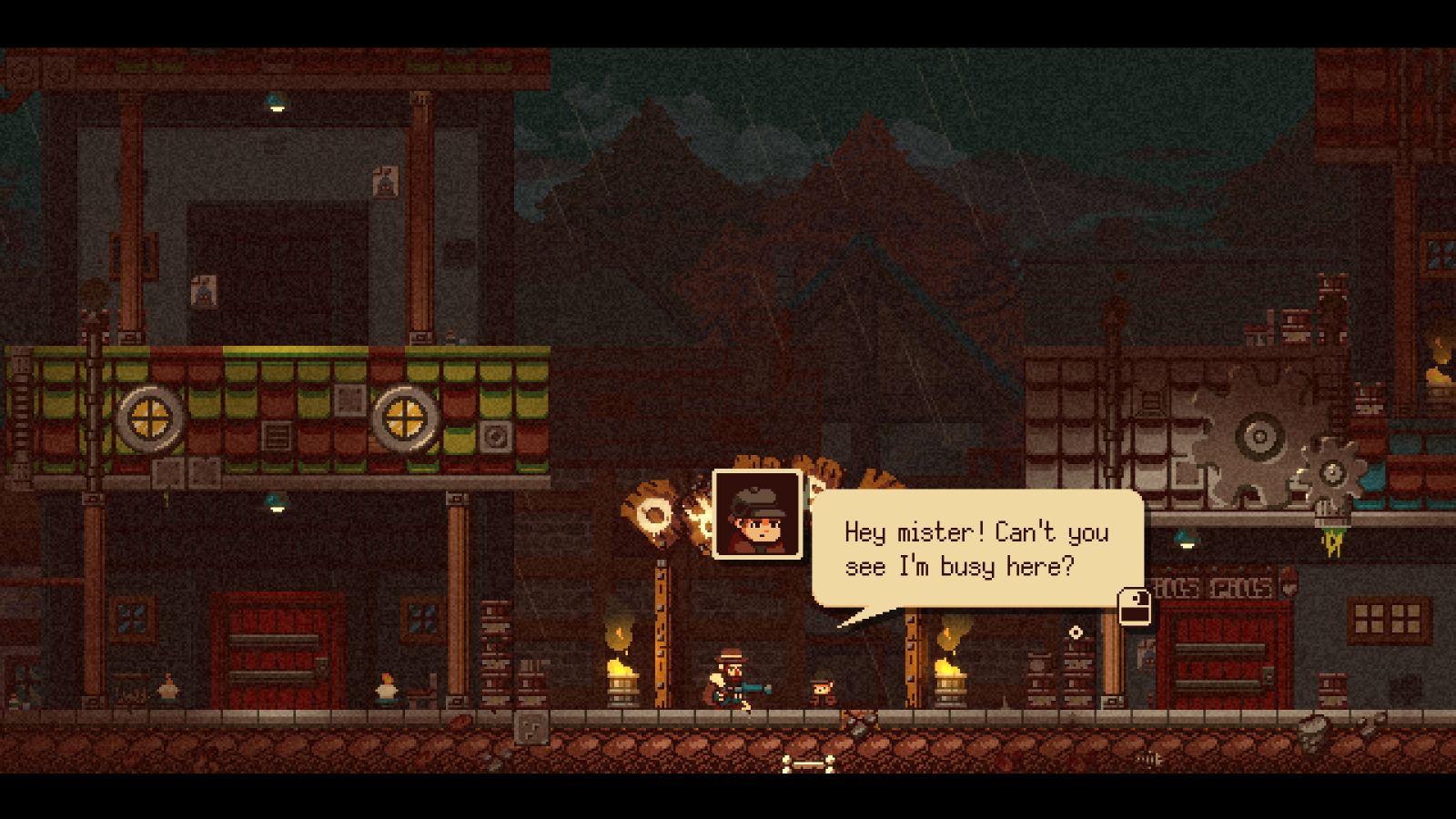
It’s not all doom and gloom, Gunbrella does have a sense of humor. This is the kind of game where a man crouched behind a fence surrounded by rats will call YOU sketchy. You’ll go into a fisherman’s attic only to find a chicken who pleads for help between clucks. Characters might die at the drop of a hat, sometimes it’s played for laughs, sometimes it’s played straight. It’s nonsensical, yet down to earth. No one gets a ten-minute monologue while dying in real life, it just happens, and Gunbrella understands that.
You might think it would be frustrating to have characters die off in ways you can’t prevent, but I revel in it. No one is safe, so when you come across someone you really like, all you can do is hope they stay around and adjust your choices accordingly. It truly is a lesson in disempowerment, and it lends to the tone of a game immensely. It makes the choices you make feel so much more impactful. For example, I found a gem and returned it to the merchant who was looking for it. Then I was terrified that I’d butterfly effected some horrible events into motion because I didn’t give it to his rival Sewert, the rat eater who lives in the sewers.
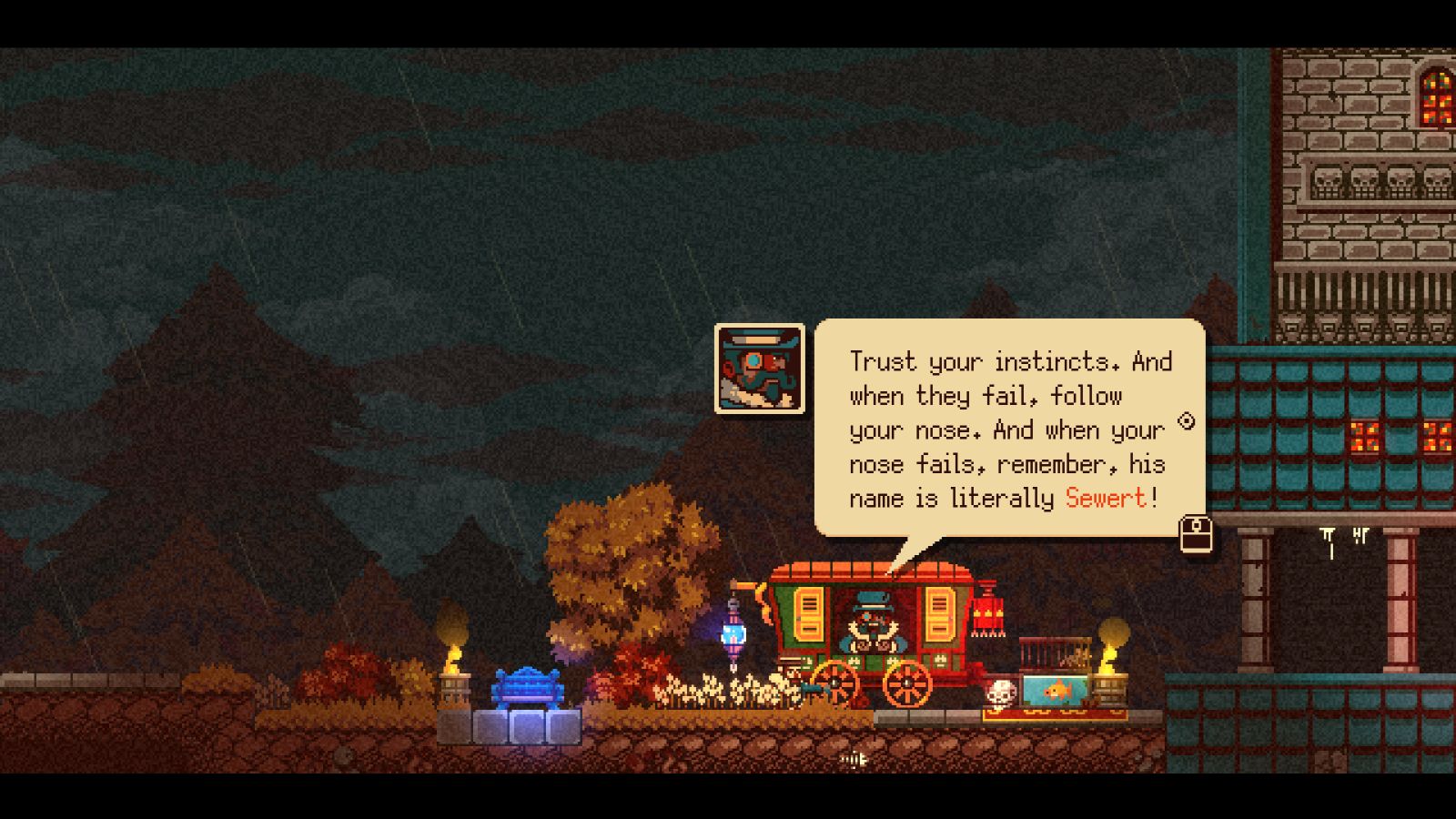
You HAVE to be paying attention, and choose which dialogue option you’re selecting wisely. Sometimes conversations will move on, and there is no going back. People WILL remember what you’ve done for them (and to them). You’ll never know when a good deed or mercy will come back around to help you out. Gunbrella is one of the few games where I felt my choices truly mattered.
This game really knows how to tie the tiny details into the greater picture. The letter of a sign hanging in one chapter might have more significance in another, a small side character who you thought was a throwaway comes back. The word feels dynamic and lived-in, which makes you feel attached and immersed.
There are also the more gameplay-driven horrific elements, like fighting the first boss, “Baby”, a cult’s ritual gone wrong. Baby makes infantile noises and smashes its gory body around like a fleshy wrecking ball. On the same level, you find a book saying that the souls of loyal beasts and children are best for creating such abominations, implying some nasty ideas about the world’s magic system. There are so many moments like this, and almost all of them are character-driven.
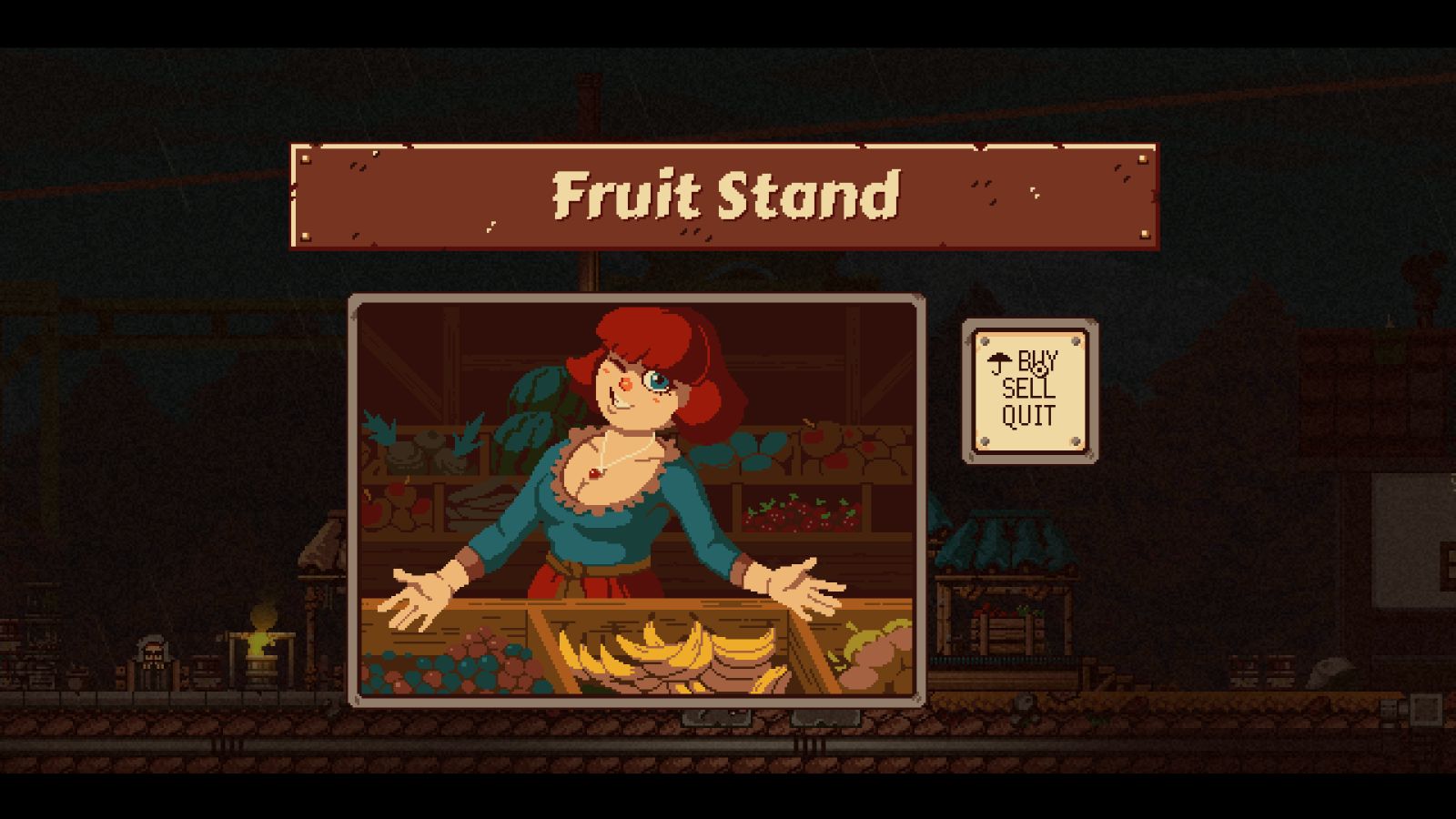
The story is amazing, but it does have its blunders. Without spoiling anything, the ending felt rushed, and it’s a shame! They built up this grimy, dying world, and eventually, you get to view a portion of it that’s pristine, but they imply dark things are happening behind the scenes, and that progress comes at a terrible cost. Then the game just info dumps, you fight a baddy, then the final baddy, and the game ends.
I would have liked it to be a slower burn so that all that world-building could flourish and the main story could come to fruition. The game runs for about six hours, but it definitely could have benefited from another one or two just to tie up the story. Overall, despite some minor missteps at the end, the story and world-building are BY FAR Gunbrella’s strongest elements, it kept me locked into the narrative with a laser focus.
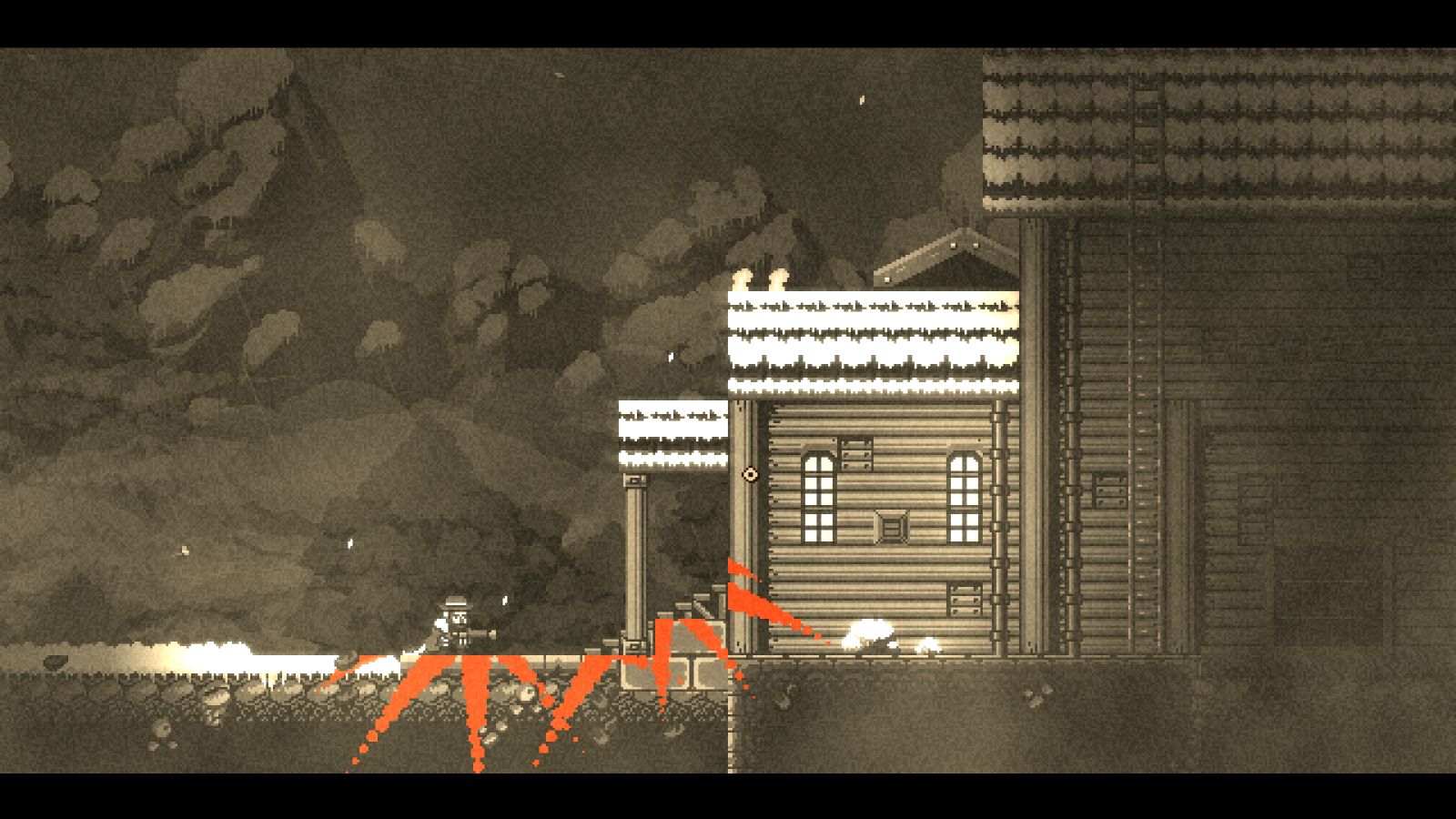
The gameplay itself has its strengths and weaknesses. One of the strengths is how it’s introduced. The tutorial is quick, easy, and blunt, mainly in the form of a sign outright telling you how to move/shoot with your Gunbrella. Sometimes it’s a little more tongue in cheek, like the books by Punctual Pete which explain how systems and items work rather than the controls of them.
There’s a lot of talk about this game being Metroidvania, which I struggle to see. Backtracking is on the lighter side, and you never really gain new abilities, just new ammo (which I’ll get to later). Neither backtracking nor gaining new ammo types really changes how you fundamentally see the game outside of the story elements. The upgrades affect damage and fire rate… that’s it. On top of that, the progression is linear as it takes the form of a train that whisks you away to the next section. It doesn’t get more linear than that! The puzzles are about on the same level as the ones you’d find in Skyrim, pretty simple stuff.
The levels are varied and interesting in theme, thus giving you the distinct feeling of being on a journey. One level might take you into the snowy mountains, where you have to kill a lion in one-on-one combat in front of its cubs to assert dominance, or maybe you’re in a factory, where your main enemy is a never-ending maelstrom of OSHA violations. Either way, I doubt you’ll ever be bored with the setting itself. There’s so much visual depth to the levels, and the pixel graphics are delightfully done. You can look back at further layers and see mountains, trees, or the industrial corruption that plagues the lands.
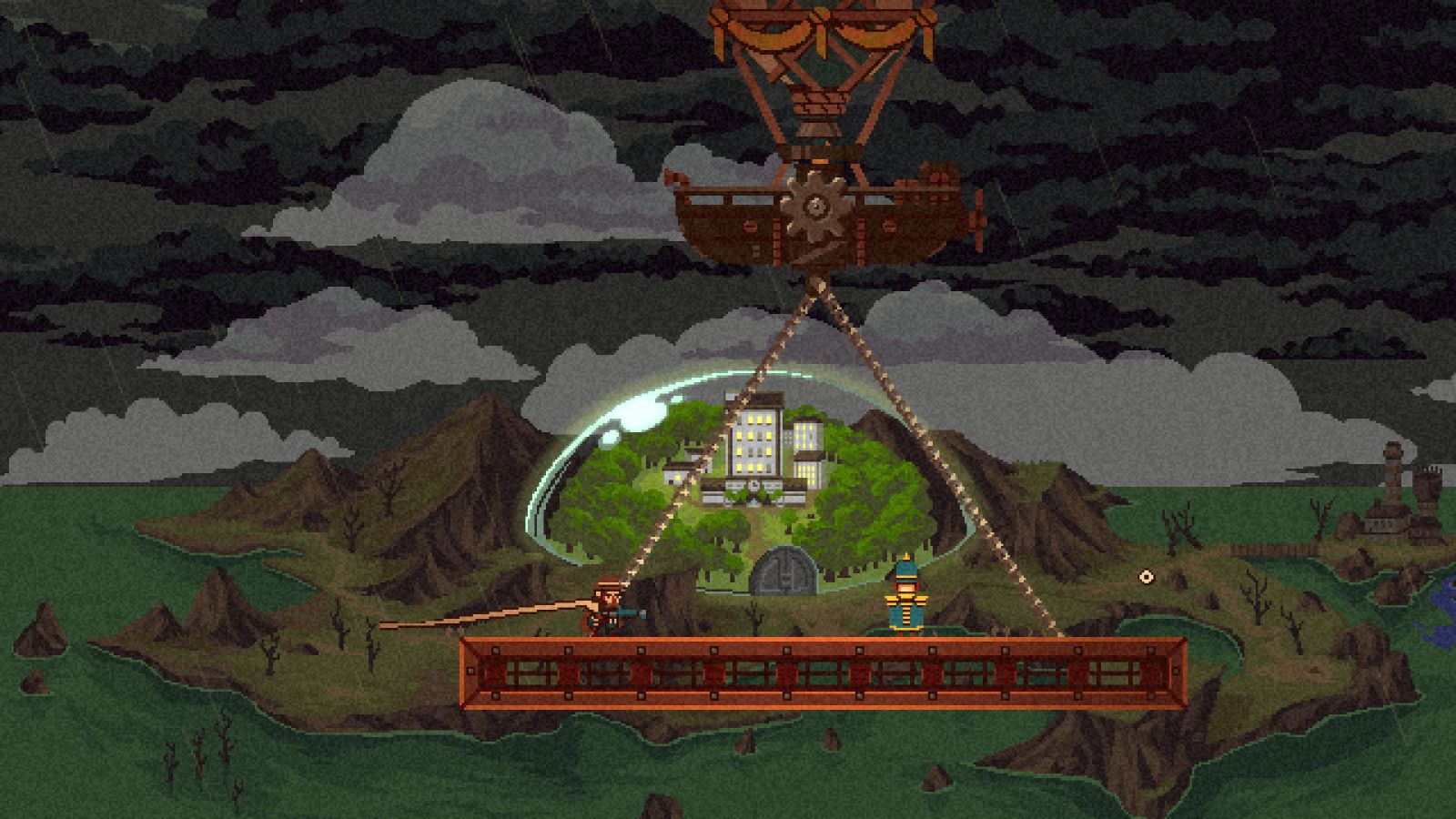
The gunbrella itself is a joy to move with, when you master the movement, it becomes immensely satisfying to glide around from place to place with a simple pop of the canopy. Of course, there’s also the shooting which feels pretty good, and what an arsenal you have! Grenades, rifle ammo, and of course, your trusty buckshot are just some of the ammo types you have available to you. You can even use recoil to gain a little extra jump height. However, while the movement and shooting are smooth, selecting ammunition and healing items feels clunky. Gunbrella would have benefited a lot from a weapon wheel, maybe with a slow-time effect. You can alleviate some of the pains by remapping the controls, but that only applies to healing items and the like.
Combat is rather one note, despite the ammunition options, I found that I never really needed to use anything except the basic buckshot and rifle ammo. Maybe I would spam explosives from time to time, but most of the ammo types stayed tucked away in my noir trench coat for the whole game.
What about the people you’re shooting at? Enemies are just as important as weapon selection, and I have to say, the enemy types are pretty varied and amazing in concept! Flying cultists, stationary sentry guns, and scrapyard ruffians are all great, but my personal favorite are the Parasol Gunman. They’re an elite security force decked out in black coats with gold lining who also use gunbrellas, meaning they have some added agility. However, most enemies share a common problem, they’re spoiled by their lack of aggression and range. Even on hard mode, this game is pretty easy.
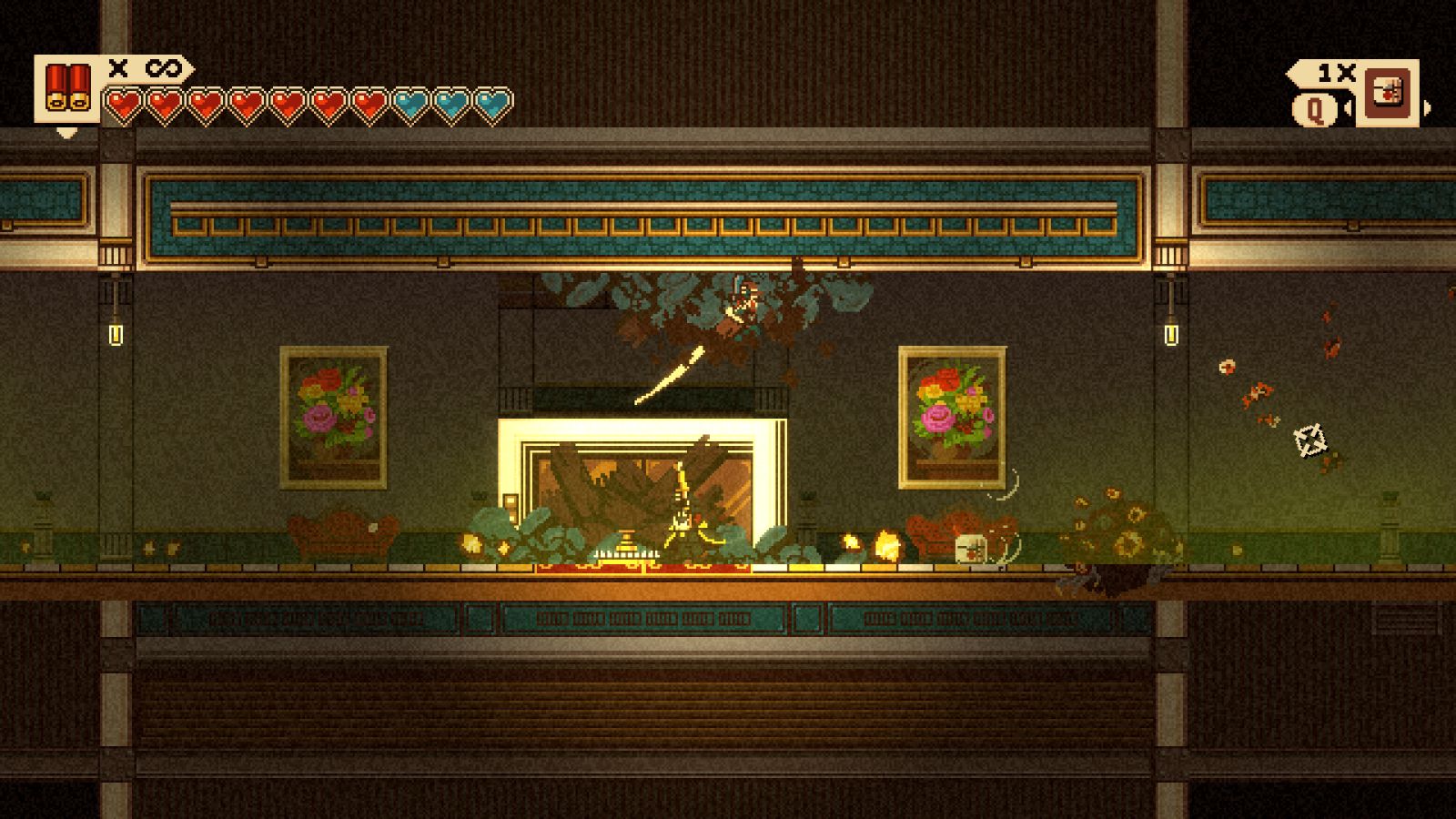
There’s still a lot of satisfaction in atomizing enemies with the shotgun, bouncing and gliding from one enemy to another in rapid succession, blasting them into bloody stains. However, watching the enemies fumble around and try to compete with you is simply sad, especially if you have gained any level of mastery over the gunbrella’s movement mechanics. It genuinely almost felt like bullying with how cute the enemies’ sprites were as they struggled to engage me.
In one of the boss fights I just parried all of the bullets back at an enemy over and over, and dodged his predictable attacks. I really wish the movement and mechanics of the “brella” part of the gunbrella were used more in fights. On the industrial level, we get two boss fights back to back, but the unique mechanics of the stage aren’t incorporated in any way. There are conveyor belts to hook on to, acid vials to spill over, as well as air vents and hydraulic presses that help you gain verticality, yet none are used in the boss fights.
Overall, turning people into a fine red mist is always satisfying, but without any real challenge or reason to think about your ammo choices, it leaves the combat feeling shallow and anemic. Boss fights that are meant to challenge your skill will more often than not challenge your attention span. It would have been great if various enemies were more susceptible to certain types of ammo, but as far as I can tell, they’re all the same.
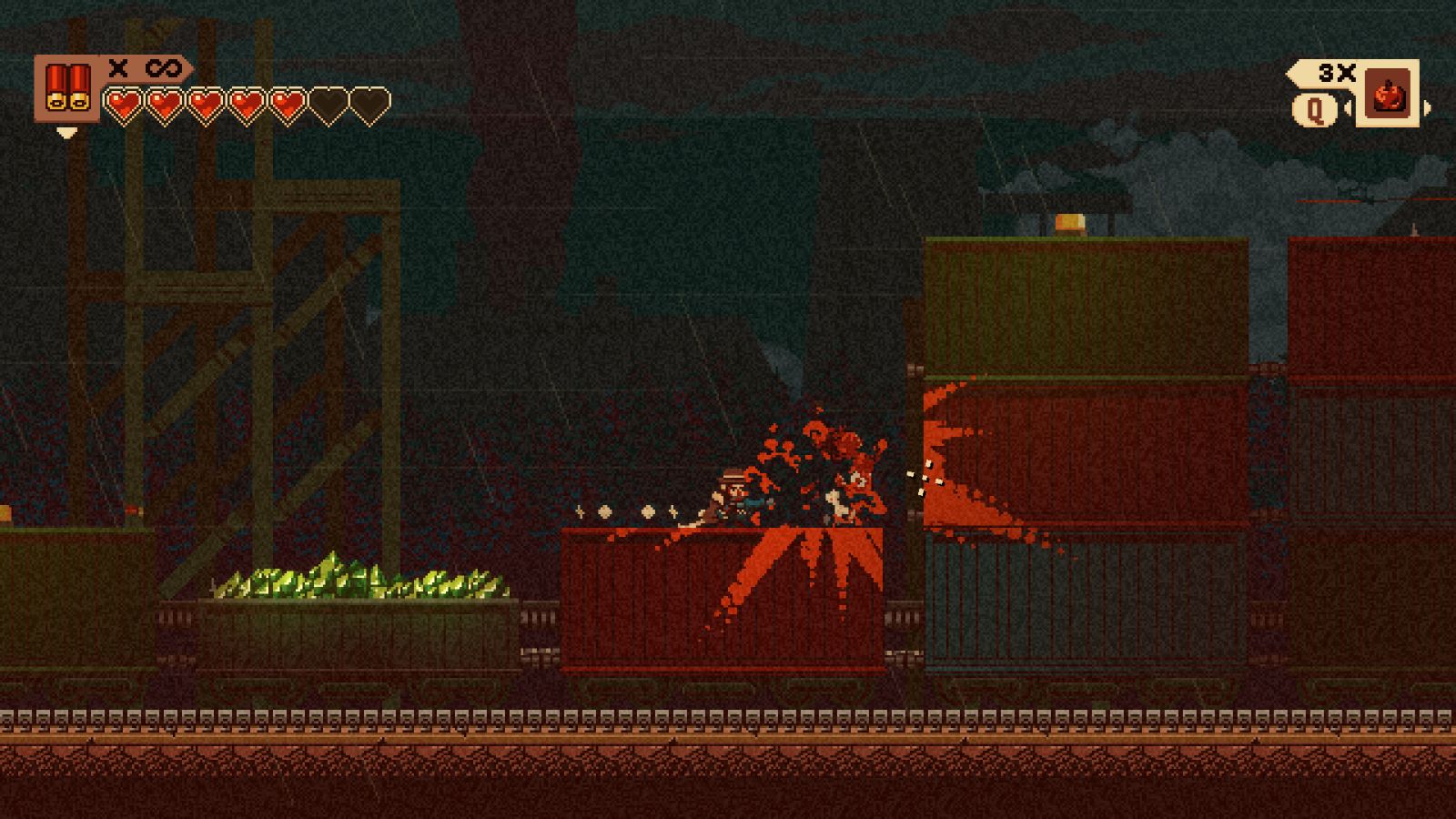
Gunbrella’s high-tier aesthetics must be brought up, as they elevate every portion of the game to the next level. Sure the combat is middling, but hearing the blast of the shotgun followed up by the light rattle of the shells hitting the ground elevates the experience. The music is also solid. Drums kick up into a military beat when talking to soldiers near the town’s gate, the main theme buzzes in during moments of intrigue, and the calmness of the church’s themes makes it feel like one of the few places of respite in the entire game. And of course, I will never stop bopping to the merchant’s theme. Both sound and music are used to great effect in Gunbrella.
All in all, Gunbrella balances its down-to-earth grittiness with whimsical bits and delightful characters in a way that enhances both. The jokes provide a reprieve from an otherwise bleak world, and the bleak world means that at any point, those characters could vanish; hero, villain, it doesn’t matter. While the combat isn’t anything to write home about challenge-wise, it still maintains a respectable amount of pomp with how it presents its wanton violence. If you’re interested, then you can buy Gunbrella on Steam or Switch for $14.99.
Gunbrella
Great
While Gunbrella might struggle with providing a challenge, it more than makes up for it by providing a dark, gritty world where your choices have very real consequences. Not all is doom and gloom, as the comedy flows like polluted water down a city’s gutters on a rainy night, and you can bet it’s accompanied by some killer jazz!
Pros
- Gripping story and setting
- Music and sound design enhance the experience
- Choices actually matter (For real)
Cons
- Combat lacks any real challenge or spice
- The ending felt rushed
